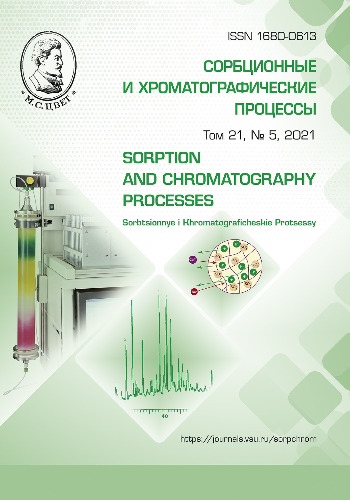The use of mixed solvents to determine the concentra-tion of dissolved substances by optical micrometry
Abstract
This article is devoted to the study and analysis of the swelling kinetics of polyvinyl alcohol in electrolyte solutions based on a mixed isopropanol-water solvent with the isopropanol volume fraction of 65%. We studied the swelling kinetics of cross-linked PVA in water-isopropanol solutions of HCl, NaOH, and NaCl. In this article, we considered and analysed the general properties of the kinetic curves obtained by recording the variation of the PVS granule volume in the studied solutions. We provided general conclusions about the regularities of change in the PVS swelling degree, such as the total change in gel volume, the presence and depth of an extremum, the equilibrium values of the degree of swelling of PVS granules.
It was determined that the sensitivity of optical micrometry for all studied solutions was significantly higher, when the solvent was a mixture of water and isopropanol rather than water. It was found that the sensitivity of the method decreased with a decrease in the analyte concentration, but remained higher than in aqueous solutions.
In order to reduce the analysis time, it is possible to determine the concentration of dissolved substances by the initial sections of the kinetic curves, which can be recorded for the substances in the analysed solutions by optical micrometry. Based on the obtained kinetic data for each studied substance, surfaces were built, reflecting the dependence of the degree of swelling of the PVA granule on the concentration of the solution and on the time in this solution. Such surfaces allow determining the concentration of a substance in the studied solution at any given time by laying the experimental data over them, even if the data array consists of a single point.







